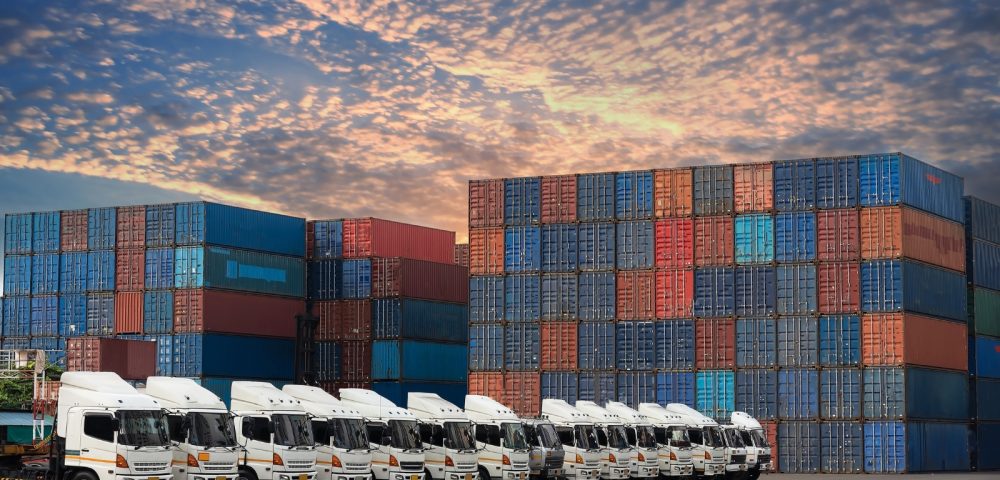Behind every smooth shipment and on-time delivery lies a story of strategy, speed, and innovation. This is the story of industrial logistics. In today’s competitive economy, mastering logistics has become non-negotiable for supply chains, factories, and global trade networks alike. But what makes it tick?
This article dives into the key aspects of industrial logistics that fuel efficiency and success worldwide.
We will uncover
- What is the Meaning of Industrial Logistics?
- Why Industrial Logistics is Important
- The Main Aspects of the Logistics Industry
- Future Trends in Industrial Logistics
- Cerexio Solution for Superior Industrial Logistic Ecosystem
- Making Every Aspect of Industrial Logistics Strong with New Technology
- FAQ about Industrial Logistics
What is the Meaning of Industrial Logistics?

- Industrial logistics refers to the organised movement, storage, and handling of materials, equipment, and products within industries like manufacturing, construction, and heavy engineering.
- Unlike general logistics, which focuses on everyday goods and retail products, industrial logistics deals with larger, heavier, and often more complex items that require specialised processes and equipment.
- It keeps production lines running smoothly, ensures materials arrive on time at job sites, and also supports massive operations.
- Due to its complexity, companies must plan industrial logistics carefully. Some delays or mistakes can disrupt projects and increase costs significantly, making precision and coordination essential.
Why Industrial Logistics is Important

The latter plays a huge role in keeping businesses efficient, cost-effective, and fast. All sorts of industries can save money when they manage resources smartly, reduce waste, and avoid unnecessary delays.
As one of the main benefits, smooth logistics ensures materials and products arrive on time, which keeps productivity high and prevents costly interruptions. When businesses deliver quickly and reliably, customers feel satisfied, and trust grows stronger.
At the same time, superior logistics helps companies stand out in competitive markets because they can offer better prices, faster service, and consistent quality. As industries grow more complex, businesses that master logistics gain an edge, stay dependable, and meet customer expectations with confidence and speed.
The Main Aspects of the Logistics Industry

Supply Chain Integration
This aspect connects suppliers, manufacturers, warehouses, and distributors into a seamless flow of goods and information.
In this case, businesses work closely with every part of the chain to cut delays and reduce confusion. When everyone stays aligned, materials move faster, and production stays steady without sudden stops.
Just-in-time (JIT) delivery shows how well this can work because it brings in supplies exactly when they are needed. This kind of integration also builds trust among partners and strengthens reliability.
Companies that align their supply chain effectively respond quicker to demand changes, avoid waste, and keep operations running smoothly from start to finish without unnecessary hiccups.
Inventory Management
This keeps stock levels balanced so businesses avoid problems like overstocking, which ties up money, or stockouts, which delay production.
Companies track inventory carefully to know exactly what to order and when to order it. Methods like ABC analysis help them prioritise high-value items, while Economic Order Quantity (EOQ) calculations help them decide how much stock to keep at a time.
In the meantime, safety stock acts as a backup to cover unexpected spikes in demand. Businesses that master inventory management reduce waste, save space, and ensure customers always get what they need.
With clear systems, they respond better to both steady and unpredictable demand.
Material Handling and Storage
This is where it is required to focus on moving and keeping bulky, heavy, or hazardous goods safe and efficient. Businesses choose specialised equipment like forklifts, conveyors, or cranes to move items without damage or delay.
They also plan warehouse layouts smartly so workers spend less time walking or searching for goods. Many companies use automated storage and retrieval systems (AS/RS) to save space and speed up the process.
Handling materials properly prevents accidents, protects valuable items, and keeps workflows smooth. With the right tools and layout, businesses create safer, faster, and more reliable storage and handling processes that make daily operations much easier.
Transportation and Fleet Management
This specific aspect decides how goods travel from one place to another, whether by road, rail, sea, or air.
It is possible to pick the most suitable mode depending on cost, speed, and distance. They also plan the best routes to save fuel and avoid delays while using GPS tracking to watch shipments in real time.
Efficient fleet management cuts unnecessary costs, keeps vehicles in good shape, and ensures on-time deliveries. When companies plan transportation wisely, they meet customer demands faster and keep expenses low.
Therefore, smart decisions about transport not only move goods efficiently but also reduce the risks of damage or loss along the way.
Technology and Automation in Industrial Logistics
This fusion brings better control, speed, and accuracy to industrial logistics. Tools like ERP systems, Warehouse Management Systems (WMS), RFID tags, Internet of Things (IoT) devices, and even robots make tracking goods and managing workflows much easier.
The industrialists can use these technologies to see inventory levels in real time, automate routine tasks, and reduce mistakes. This kind of visibility helps them react quickly to problems and meet deadlines confidently.
With the right technology, they save time, cut costs, and improve service quality, and it allows employees to focus on smarter decisions instead of spending time on repetitive, time-consuming work.
Sustainability and Green Logistics
Sustainability and green logistics help businesses protect the environment while running efficient operations.
It is a good thing that many companies now choose practices like using energy-efficient vehicles, recycling materials, and designing routes that reduce fuel use. They also follow environmental regulations closely to avoid fines and earn customer trust.
Plus, businesses adopt renewable energy in warehouses, switch to eco-friendly packaging, and lower emissions wherever possible. These efforts not only benefit the planet but also save money over time and improve their public image.
When companies commit to greener logistics, they show responsibility, meet customer expectations for sustainability, and stand out as environmentally conscious in a competitive market.
Future Trends in Industrial Logistics

If we look into the future trends in industrial logistics, we can see that they bring exciting changes like AI-powered logistics, predictive analytics, and autonomous vehicles that promise faster and smarter operations.
Companies already use AI to plan routes, forecast demand, and spot problems before they grow.
Predictive analytics helps them understand patterns and make better decisions, while autonomous vehicles reshape how goods move without human drivers.
However, there must be some preparation from the company’s end for these changes. Businesses will need to train their teams, invest in modern technology, and test new systems early to stay ahead. As these trends grow, companies that stay curious and adaptable will grab new opportunities, cut costs, and deliver better service in a fast-moving world.
Cerexio Solution for Superior Industrial Logistic Ecosystem

Cerexio presents an Industry 4.0-driven MES that uses sensors, data analytics, and automation to monitor and control industrial logistics instantly. Our system ensures materials arrive just when needed, prevents bottlenecks, and adjusts schedules dynamically. This seamless communication between production and logistics removes inefficiencies and builds a fast, dependable, and delay-free supply chain ecosystem for your manufacturing company.
Making Every Aspect of Industrial Logistics Strong with New Technology

We explored the key aspects making industrial logistics unstoppable with new technology. Now the question turns to you: are you ready to act? Challenge the ordinary, embrace innovation, and push for continuous progress in every aspect. The next level of your logistics starts with one choice. Make it yours today and own the advantage.
FAQ about Industrial Logistics
The three main types of logistics are inbound logistics, outbound logistics, and reverse logistics. Inbound manages material flow to a business, outbound handles delivery to customers, and reverse logistics focuses on returns, recycling, or disposal of products after use.
The most important aspect of logistics is ensuring the right products reach the right place at the right time, which is transport. Effective logistics balances cost, speed, and accuracy while optimising resources to meet customer demands and maintain smooth supply chain operations.
Inbound logistics involves managing the transportation, storage, and delivery of raw materials, components, or goods from suppliers to a business. It focuses on sourcing, purchasing, and moving resources efficiently to support production or inventory needs.
